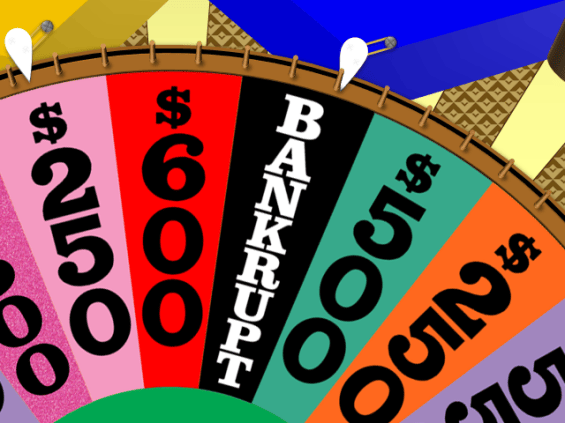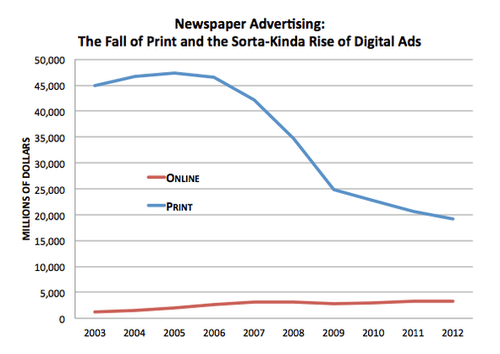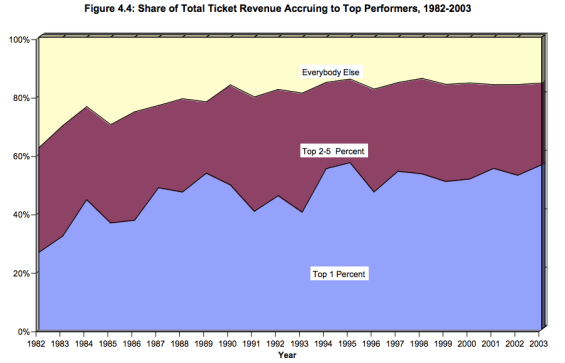It’s no secret that technology disrupted journalism’s business model, and it has yet to recover. What’s puzzling is that the disruption seems to have created lots of losers but no new winners within journalism.
To quickly recap, the first blow was online alternatives like CraigsList taking away newspapers’ classifieds business, which represented around 50% of big papers’ revenue. The next blow has been the inability of newspapers to replace print advertising money with digital advertising money as readers go online, as aptly demonstrated by this graph from The Atlantic:
The result is that employment numbers for newspapers look like this:
An editor at The Atlantic has declared that “So far, there isn’t a single [business] model for our kind of magazine that appears to work.” Pew Research Center’s 2013 report State of the News Media is full of doom and gloom as it chronicles the industry’s decline.
Newspapers’ supporters fret that we could soon see an American city without its own newspaper. We sympathize with concerns about the very real impact the loss of a regular paper can have on a city. But from an economic perspective, we want to know why big market newspapers have failed to capitalize on smaller papers’ struggles.
To understand why we would expect this, let’s look at how technology has changed the music industry. Online distribution has been as big a shock to its revenues as it has been for newspapers: file sharing and digital music contributed to the music industry’s revenues being cut in half from 2000 to 2010.
But at the same time, it has been part of a trend that has made musicians at the top of the hierarchy richer at the expense of the rank and file. In terms of concert revenue, for example, the top 1% of earners – big name artists like Justin Timberlake and Rihanna – increased their share from 26% in 1982 to 56% in 2003.
A theory typically proposed to explain the concentration of profits is the “superstar effect,” advanced by economist Sherwin Rosen in 1981. It applies to industries such as music, where consumers can jointly enjoy a good. (If I buy a Beatles CD, I do not keep you from enjoying The Beatles, just as we can both attend a Beatles concert.) In such industries, technology allows superstars to serve more of the market and profit more, although at the expense of smaller players who lose out on customers.
Writer Eduardo Porter explains the superstar effect in the music industry:
“The reasoning fits smoothly into the income dynamics of the music industry, which has been shaken by many technological disruptions since the 1980s. First, MTV put music on television. Then Napster took it to the Internet. Apple allowed fans to buy single songs and take them with them. Each of these breakthroughs allowed the very top acts to reach a larger fan base, and thus command a larger audience and a bigger share of concert revenue.”
News, like music, can be jointly consumed. The readership of a newspaper can increase from ten thousand to ten million without the authors needing to do any more work to serve an audience 1000 times larger. Over the past generation, journalists have gained the ability to easily reach a global audience. So why aren’t the most talented and prestigious print media outlets and journalists raking in the dough?
Outside of print, journalism does see the superstar effect. Hosts of well-known television programs, such as Anderson Cooper, make over $10 million just for their show. That doesn’t include other revenue sources. Speaking fees for Fareed Zakaria, journalist and host of Fareed Zakaria GPS on CNN, are rumored at $75,000 for a one hour appearance.
But print has not been able to turn its increased readership into profits. And outside of a handful of famous op-ed writers largely known for their work outside newspapers (think Paul Krugman and Tom Friedman of the New York Times), very few journalists have big-time name recognition.
It’s worth noting that op-ed writers are generally the most well-known journalists. They’re picture is always printed, they write with a signature style, and papers advertise their faces and perspectives. Reporters, in contrast, write in an anonymous “this is news” tone fitting an institution that did not introduce bylines until the 1920s. It’s in line with their objective of writing “objective” journalism, but its lack of individuality contributes to consumers turning to blogs that summarize reporting from the major outlets as substitutes.
Print journalism is a hard job. Anyone who can coax a story of political corruption out of Afghan politicians or break a novel story during the news saturation of an American election is a superstar. No one wants to sell out the ideal of public service journalism, but to survive, maybe it’s time for talented rank and file reporters to build their brand and earn those five figure speaking fees.
This post was written by Alex Mayyasi. Follow him on Twitter here or Google Plus. To get occasional notifications when we write blog posts, sign up for our email list.







